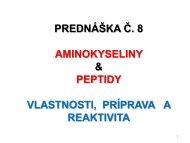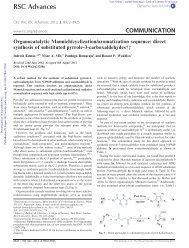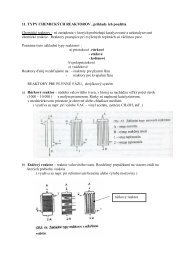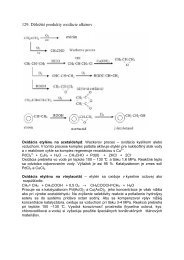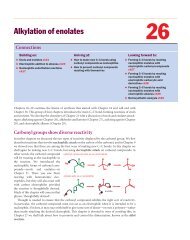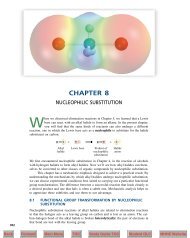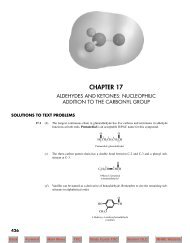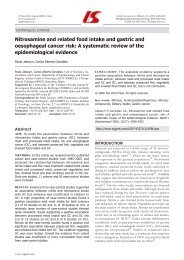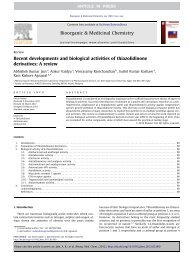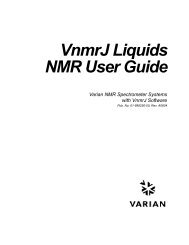Create successful ePaper yourself
Turn your PDF publications into a flip-book with our unique Google optimized e-Paper software.
A solid-phase, regioselective, copper(I)-catalyzed, 1,3-dipolar cycloaddition of terminal alkynes<br />
to azides has been used to prepare peptido-1,2,3-triazoles. [145] Copper(I) salts are<br />
used as catalysts in the reaction of resin-bound terminal alkynes to primary, secondary,<br />
and tertiary alkyl azides, aryl azides, and an azido sugar at 258C, affording selectively 1,4disubstituted<br />
1H-1,2,3-triazoles with quantitative conversions and purities ranging from<br />
75 to 99%. [145]<br />
<strong>13</strong>.<strong>13</strong>.1.1.3.1.1.3.5 Variation 5:<br />
Intramolecular 1,3-Dipolar Cycloadditions<br />
The intramolecular 1,3-dipolar cycloaddition of an azido group onto a C”C bond gives<br />
polycyclic triazoles. Azides 122 and 124, for example, give triazoles 123 (52%) and 125<br />
(59%), respectively, when heated in refluxing toluene (Scheme 50). [146]<br />
Scheme 50 Synthesis of 1,2,3-<strong>Triazoles</strong> via Intramolecular<br />
1,3-Dipolar Cycloadditions [146]<br />
N 3<br />
122<br />
OH<br />
toluene, reflux, 36 h<br />
52%<br />
N<br />
N<br />
N<br />
123<br />
HO OTBDMS<br />
HO<br />
N 3<br />
124<br />
FOR PERSONAL USE ONLY<br />
450 Science of Synthesis <strong>13</strong>.<strong>13</strong> 1,2,3-<strong>Triazoles</strong><br />
toluene, reflux, 24 h<br />
59%<br />
OH<br />
N<br />
N<br />
N<br />
125<br />
OTBDMS<br />
Propargyl azides 127 undergo intramolecular cycloaddition reactions yielding N-unsubstituted<br />
1H-1,2,3-triazoles <strong>13</strong>0 (Scheme 51). The reaction must be carried out in nucleophilic<br />
solvents, such as methanol or ethanol, or in the presence of nucleophiles such as<br />
azide ion, amines, or thiols, if not, then only polymeric triazole products are obtained.<br />
The mechanism of this transformation involves the rearrangement of the propargyl azide<br />
to allenyl azide 128 that gives by rapid ring closure the triazafulvene 129. This short-lived<br />
intermediate is trapped by nucleophiles to give triazoles <strong>13</strong>0 in good yields. [147,148] Since<br />
propargyl azides can be prepared from propargyl halides or propargyl tosylates 126<br />
(X = halogen, OTs) and sodium azide, various substituted 1,2,3-triazoles can be synthesized<br />
in good yields in one-pot procedure from these precursors without the necessity to<br />
isolate the potentially hazardous propargyl azides. In the presence of sodium hydroxide<br />
the propargyl azides 127 undergo base-catalyzed (prototropic) rearrangement to allenyl<br />
azides <strong>13</strong>1. The immediate cyclization of this intermediate leads to the triazafulvene<br />
<strong>13</strong>2, which can be trapped by nucleophiles to give triazoles <strong>13</strong>3 in good yields (Scheme<br />
51). [148]<br />
A. C. TomØ, Section <strong>13</strong>.<strong>13</strong>, Science of Synthesis, 2004 Georg Thieme Verlag KG



